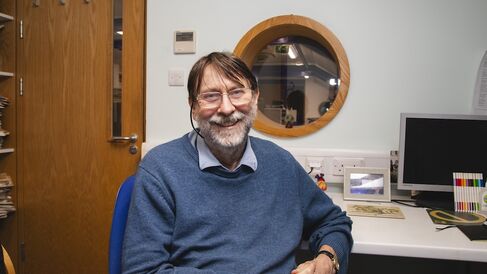Tony Jackson

Sodium channels and other plasma membrane proteins.
In electrically-excitable cells, the voltage-gated sodium (Nav) channel initiates the action potential. Sodium channels are major pharmacological targets and are implicated in heart disease, epilepsy, and chronic pain. The sodium channel consists of a ~260 kDa alpha-subunit with associated ~35-40 kDa beta-subunits. The beta-subunits modulate channel electrophysiological behaviour. We are interested in the role of the beta 3-subunit in regulating Nav channels. Deletion of the mouse beta 3-subunit gene is associated with cardiac arrhythmias. We study the beta 3-subunit and its interactions with Nav channels using electrophysiology, site-directed mutagenesis, unnatural amino-acid technology, and single-chain antibody technology.
On the plasma membrane, Nav channels cluster into spatially-restricted complexes. This behaviour has important functional consequences. In collaboration with Sarah Perrett (Institute of Biophysics, Chinese Academy of Sciences, Beijing) and Kathryn Lilley (Cambridge Centre for Proteomics), we developed 'Selective Proteomic Proximity Labelling Assay Using Tyramide' (SPPLAT), a quantitative proximity proteomics method to identify molecular near-neighbours of selected plasma membrane proteins. We are using SPPLAT to study the near neighbours of the heart-specific channel Nav1.5 (in collaboration with Chris Huang, Department of Physiology, Development and Neuroscience) and the pain-sensing channel Nav1.7 (in collaboration with Ewan St-John Smith, Department of Pharmacology). We believe that SPPLAT will have wide application to many problems in the biomolecular sciences.
Research objectives
Structure/function studies on voltage-gated sodium channels.
Determination of the molecular organisation of Nav channels in the neuronal and cardiomyocyte plasma membrane, in heath and disease.
Identification of novel immunological reagents for use with Nav channels.
Key publications
Salvage SC, Rees JS, McStea A, Hirsch M, Wang L, Tynan CJ, Reed MW, Irons JR, Butler R, Thompson AJ, Martin-Fernandez ML, Huang CL, Jackson AP (2020). Supramolecular clustering of the cardiac sodium channel Nav1.5 in HEK293F cells, with and without the auxiliary β3-subunit. FASEB J., 34(3):3537-3553. doi: 10.1096/fj.201701473RR
Salvage SC, Zhu W, Habib ZF, Hwang SS, Irons JR, Huang CLH, Silva JR, Jackson AP (2019). Gating control of the cardiac sodium channel Nav1.5 by its β3-subunit involves distinct roles for a transmembrane glutamic acid and the extracellular domain. J. Biol. Chem., 294(51):19752-19763. doi: 10.1074/jbc.RA119.010283
Rees JS, Li XW, Perrett S, Lilley KS, Jackson AP (2017). Selective Proteomic Proximity Labeling Assay Using Tyramide (SPPLAT): a quantitative method for the proteomic analysis of localized membrane-bound protein clusters. Curr. Protoc. Protein Sci., 88:19.27.1-19.27.18. doi: 10.1002/cpps.27
Li XW, Rees JS, Xue P, Zhang H, Hamaia SW, Sanderson B, Funk PE, Farndale RW, Lilley KS, Perrett S, Jackson AP (2014). New insights into the DT40 B cell receptor cluster using a proteomic proximity labeling assay. J. Biol. Chem., 289(21):14434-14447. doi: 10.1074/jbc.M113.529578
Namadurai S, Balasuriya D, Rajappa R, Wiemhöfer M, Stott K, Klingauf J, Edwardson JM, Chirgadze DY, Jackson AP (2014). Crystal structure and molecular imaging of the Nav channel β3 subunit indicates a trimeric assembly. J. Biol. Chem., 289(15):10797-10811. doi: 10.1074/jbc.M113.527994
